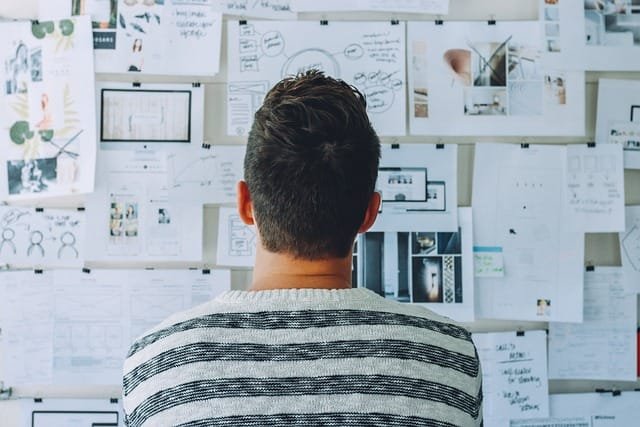In a sea of startups, every innovative idea deserves its moment in the spotlight. We’ve handpicked and analyzed your website, offering free marketing insights, as our way to nurture the next big thing. We’re passionate about partnering with startups like yours.
If you find our insights valuable, and would like to discuss it further, feel free to schedule a call.
Startups with VC-funding of $1-20 Million can request their own marketing plan too.
In order to reach this goal, a single four-pronged strategy is what would be needed. Here’s what we suggest –
#1. On-Page SEO Plan for K2 Space
K2 Space does not have any blog articles
. As K2 Space starts to scale, it needs to focus more on inbound marketing and it also needs to come off as a thought-leader in the space.
As such, we recommend that you try and scale up your content to 1000 in the shortest possible time.
Here is a list of 100 blog post title suggestions along with relevant keywords that you can use to fix it. You can create it pretty fast if you use AI along with content editors (but take care, the articles have to be carefully optimized to improve readability and more importantly, insert internal links for faster indexing by Google) –
- “Revolutionizing Satellite Capabilities with Mass-Abundant Design”
- “How Modern Satellite Buses Are Changing the Economics of Space”
- “The Era of High Throughput Satellites: What You Need to Know”
- “Next-Generation Satellite Design: Breaking the Mass-Cost Paradox”
- “Shorter Design Cycles: The Future of Satellite Manufacturing”
- “Exploring the Benefits of Commercial Parts in Satellite Technology”
- “The Advantages of Multi-Orbit and Multi-Mission Satellite Performance”
- “Reducing Satellite Deployment Costs with Innovative Design”
- “The Power of High Resolution Imaging in Modern Satellites”
- “How New Satellite Technologies Make Previously Impossible Missions Possible”
- “Cost-Effective Satellite Constellations: A Look at the New Economics”
- “The Transformation of Spacecraft Readiness through Production Line Builds”
- “Understanding the Impact of Mass Abundance on Satellite Capabilities”
- “The New Frontier: Building Power-Rich Futures in Space Exploration”
- “The Rise of Mega-Class Satellites in the Space Industry”
- “Breaking Down the Cost Barriers in Satellite Deployment”
- “Leveraging Mass Abundance for Enhanced Satellite Functionality”
- “How Quick Turnaround Satellite Builds Are Reshaping the Industry”
- “The Role of High Throughput Satellites in Global Connectivity”
- “Balancing Cost and Capability in Next-Generation Satellite Buses”
- “Streamlining Spacecraft Design: A Guide to Rapid Deployment”
- “Building the Satellites of Tomorrow: Faster, Cheaper, More Capable”
- “The Evolution of Spacecraft: From Legacy Parts to Commercial Solutions”
- “The Shift to High-Capacity Satellites: Implications for Space Missions”
- “Envisioning the Future of Space Exploration with Modern Satellites”
- “Cost-Reduction Strategies for Satellite Manufacturing”
- “Advancing Space Exploration with Mass-Abundant Satellite Buses”
- “The Impact of Quick-Build Satellites on Space Mission Success”
- “Understanding Multi-Orbit Satellites and Their Mission Capabilities”
- “The Role of Commercial Parts in Accelerating Satellite Production”
- “Disrupting Space Economics with Mass-Abundant Satellite Technology”
- “Space Exploration on a Budget: How New Tech is Making it Possible”
- “The Satellite Revolution: More Capabilities for Less Cost”
- “The Game-Changing Nature of High Throughput Satellite Technology”
- “From Months to Weeks: The New Speed of Satellite Readiness”
- “How to Achieve More with Less: Lessons from Modern Satellite Design”
- “The Competitive Edge of Mass-Abundant Satellites in the Market”
- “Satellite Production Reimagined: The Efficiency of Line-Style Builds”
- “Navigating the New Age of Space Exploration with Advanced Satellites”
- “Redefining Space Missions with Cost-Efficient Satellite Technologies”
- “How Fast-Track Satellite Production is Opening New Frontiers”
- “The Key to Affordable Space Exploration: Mass-Abundant Satellites”
- “The Promise of Low-Cost, High-Capability Satellites for Future Missions”
- “Shifting Paradigms in Satellite Technology for Enhanced Exploration”
- “The Power of Scalability in Satellite Constellation Economics”
- “Overcoming Traditional Spacecraft Design Limitations”
- “The Future is Now: Ultra-Capable Satellites at Reduced Costs”
- “The Next Big Thing in Space: High Volume, Low-Cost Satellite Fleets”
- “From Design to Launch: Streamlining Satellite Deployment”
- “Satellites for the New Space Age: Bigger, Better, More Affordable”
- “Expanding Horizons: The Impact of Economical Satellite Technology”
- “The New Wave of Space Technology: Mega-Class Satellites”
- “Leveraging Commercial Innovation for Spacecraft Design”
- “Spacecraft Design: Achieving High Performance on a Budget”
- “Breaking the Mold: How New Satellites Challenge Old Norms”
- “The Satellite Bus Revolution: What’s Next for Space Tech?”
- “The Changing Face of Space Missions with Advanced Satellite Buses”
- “Unlocking New Potentials in Space with High-Capacity Satellites”
- “Satellite Design in the Fast Lane: Reducing Time from Conception to Orbit”
- “How Modern Satellites Are Paving the Way for Affordable Space Missions”
- “Cost vs. Capability: How New Satellites Are Changing the Equation”
- “The Dawn of a New Era in Satellite Technology”
- “Economic Satellite Solutions: The Key to Frequent Space Missions”
- “The Breakthrough in Satellite Economics: More Accessible Space Technology”
- “The Satellite Cost Revolution: How New Designs Are Cutting Expenses”
- “Maximizing Satellite Performance with Minimized Costs”
- “The Drive for More Affordable Space Exploration Technology”
- “Achieving Mass Efficiency in Satellite Design: A Closer Look”
- “The Future of Satellite Missions: High Performance, Low Cost”
- “The Satellite Industry’s Turn Towards More Economical Designs”
- “Cost-Effective Satellite Solutions for Expanding Space Missions”
- “How the New Generation of Satellites is Transforming Space Economics”
- “Space Tech Evolution: The Journey to More Affordable Satellites”
- “How Mass-Abundant Satellite Buses Are Making a Difference”
- “The Rise of Economical Satellite Constellations”
- “Space Exploration Transformed: The Advent of Budget-Friendly Satellites”
- “Strategic Design in Satellite Technology for Better Mission Outcomes”
- “Affordable Access to Space: The Role of Innovative Satellite Buses”
- “Next-Gen Satellites: Smarter, Faster, Cheaper”
- “Changing the Course of Space Exploration with New Satellite Designs”
- “Spacecraft Innovation: The Drive for Mass and Cost Efficiency”
- “The New Blueprint for Space Missions: Affordable Satellite Technology”
- “How Next-Generation Satellites Are Redefining Space Missions”
- “The Competitive Landscape of Satellite Manufacturing”
- “Pushing the Boundaries: The Latest in Satellite Technology and Design”
- “Designing the Future: How New Satellites Are Influencing Space Travel”
- “The New Economics of Space Exploration: Satellite Cost Innovations”
- “Rethinking Satellite Design for a Cost-Conscious Space Era”
- “The Satellite Revolution: How New Designs Are Expanding Capabilities”
- “Achieving Economical Space Missions with Advanced Satellite Tech”
- “The Art of Satellite Efficiency: Doing More with Less”
- “From Design to Deployment: The New Era of Satellite Production”
- “How New Satellite Technologies Are Enabling Ambitious Space Projects”
- “The Satellite Design Paradox: Bigger, Faster, More Affordable”
- “Rapid Deployment and Reduced Costs: The Satellite Industry’s New Norm”
- “The Space Economy: How New Satellite Technologies Are Cutting Costs”
- “Building the Satellites of the Future: Cost-Efficient and High-Performing”
- “The New Wave of Cost-Effective Satellite Technology”
- “The Game Changers in Satellite Design and Manufacturing”
- “Driving Down the Cost of Space Exploration with Innovative Satellites”
#2. Off-page SEO Plan for K2 Space
K2 Space has a low Domain Authority and Domain Rating. It’s Ahrefs’ DR is 16.
We suggest reaching out to blogs in the industry, asking to guest post. With the influx of GPT4 and other content marketing software, most blogs are not too agreeable to this suggestion, so you may need to keep some marketing budget aside for payments for backlink insertions and guest post placements.
However, you should hire a seasoned SEO guy for this as you don’t want to get backlinks from the wrong websites, as that can harm your website by adding to its spam score.
Here’s a list of 50 high quality and relevant blogs in your niche that you should try to guest post at:
- SpaceNews
- NASA Blogs
- The Space Review
- Space.com
- Parabolic Arc
- AmericaSpace
- Universe Today
- Planetary Society Blogs
- Inside Outer Space
- NextBigFuture – Space Section
- Astro Watch
- SpaceFlight Insider
- SpacePolicyOnline.com
- Ars Technica – Space Section
- NewSpace Watch
- SpaceRef
- Satnews Publishers
- NASASpaceFlight.com
- SpaceQ
- The Planetary Society
- Spaceflight Now
- SpaceTech Asia
- Sky & Telescope
- Space Exploration Network – SEN
- RocketSTEM
- The Orbital Index
- Space Frontier Foundation Blog
- The Space Cadet
- NanoSats Database Blog
- Satellite Markets and Research
- Via Satellite
- Everyday Astronaut
- SpaceNewsfeed
- Space Tech Asia
- Astrodynamics
- SpaceWatch.Global
- The Mars Generation
- SpaceTech Analytics Blog
- Astrobiology Magazine
- Satellite Today
- Space Fellowship
- Space for Humanity
- Aerospace America
- The Aerospace Corporation Blog
- European Space Agency Blog
- Cosmic Log – Alan Boyle
- HobbySpace
- Spaceflight101
- Commercial Space Blog
- Orbital Velocity

Related: Check out our free SEO suite

#3. Social Media Marketing Plan for K2 Space
If traffic, leads and revenue is your goal, we would advise you keep it simple.
We would suggest focusing on two main social platforms for starting out, which are Twitter and Facebook. We believe in keeping your marketing focused so as to deliver the highest returns.
The reason why we stress on these two platforms are simple –
- Facebook’s organic reach is very low, but having a decent following up there, helps add to your credibility. Running some ads can get you a sizeable following quite fast and cheap. Further, you can drive the followers into a group, in which, you will have a strong reach and be able to use your group participants for additional marketing requirements.
- Twitter can help add to your credibility. With Twitter’s recent partnership with Google, it looks like a great platform that can deliver amazing long-run results to your business.
#4. Conversion Optimization Plan for K2 Space
At the end of the day, it is not the traffic or followers that matter, but the conversions and leads.
That’s why, once you get the first three plans up and running and start getting a decent amount of traffic, you can switch up to the following plan.
To implement this perfectly, you need to ensure that you are getting a decent amount of traffic from the above plans and you have at least 2000 followers in Facebook and Twitter (total).
Plus, you should have lead magnets throughout your website and on the sidebar of your blog articles.
If that’s done, you should optimize the lead magnets and the sidebars to go to a webinar in your niche, wherein you teach your audience about your expertise. That can create an amazing funnel whereby you can convert a good percentage of the attendees into your paying customers. Running ads on this can help supercharge the effort as well.
Having a decent marketing agency aiding you in this process would be even more beneficial as that can ensure you have a decent conversion rate, otherwise you risk burning through your ad money and traffic value.
Would You Like us to help take K2 Space’s Traffic to 100k and beyond?
What we showed you was just the basics. But of course, a plan is only as good as it’s execution. So, you could execute all of this yourself, or you could count on us to do it as well.
We could do so much more, such as-
- Reverse HARO and get experts to share their thoughts with us for K2 Space’s blog,
- Run ads and grow your Facebook page and convert them into your Facebook group members,
- Use Javascript code to massively boost your twitter presence,
- Create leads for capture and boost your inbound marketing.
You can reach me directly by filling out this form in the sidebar or schedule a meeting here. You don’t need to pay anything for the meeting. Worst case: you learn something that you can implement for your startup’s marketing at 0 cost!
At WinSavvy, we manage everything, from digital marketing strategy formulation to execution, ensuring you can focus on what you do best – running your startup. We also provide weekly updates and I am personally available as a dedicated point of contact for any of your queries.
Best regards,
Adhip Ray
Founder, WinSavvy






















Comments are closed.